Can a forest carbon offset project protect the resources and culture of indigenous hunter-gatherers in northern Tanzania?
That’s a key question being answered by Nature Conservancy staff and partners as they work to protect the land of the Hadza, who have hunted and lived in this region for at least 40,000 years.
I’m with two members of the Hadza community now, as they head out from camp for the morning’s hunt. They each carry a wooden bow and a selection of hand-carved arrows: some with blunt tips to bring down birds without damaging meat, others with sharp steel points laced with poison for large game like zebras and kudus.
The two men, true bare-foot runners, move effortlessly through the waist-high grass and woodland. They’re jogging, scanning, glancing at the dusty earth for tracks.
When a dik-dik – a small antelope that is a favored game animal – pops out of the brush, the bow is immediately in full draw, the arrow taut on the string. But the antelope disappears too quickly in the bush. The Hadzabe trot away, cocking their ears as doves call in the distance.
Later, one hunter suddenly stops at a tree abuzz with activity. He calls his friend as he examines a hole in the tree where bees fly in and out. He crouches over, pulls out a stick and small piece of wood. He begins twirling the stick, and within a minute, has generated a smoldering ash.
He ignites a clump of small grass and then blows the smoke into the bee hive. Smoke makes them drowsy, enabling the Hadza to extract honey.
Standing there, with antelope tracks on the ground and birds in the air and sticky honey on hands, it’s clear: the land here provides.
It has provided for millennia.
It can provide forever.
Well, it might seem that way. In the remote Yaeda Valley, you can be lulled into the sense that the land indeed stretches far past the horizon, that the Hadza can go on practicing their culture as they always have.
But that in part is an illusion. The harsh reality: the future here is far from secure.
Still, the forest may yet provide, this time not in the form of dik-diks or zebras — but through forest carbon credits.
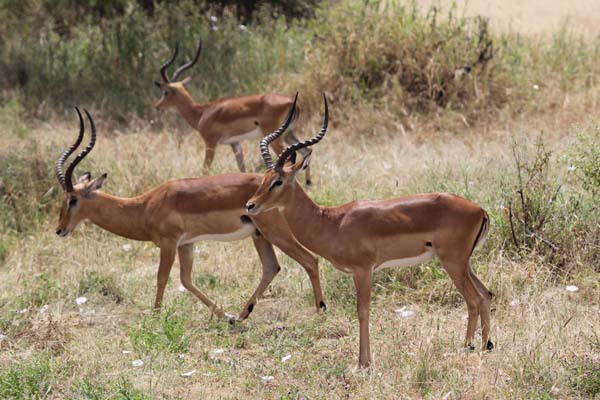
Hadza Land Under Pressure
Tanzania’s population is growing. Fast. It’s projected that the 45 million people living in the East Africa country will grow to 90 million in the coming decades.
Already, that’s putting pressure on the Hadza’s land.
Here’s what is happening: Farming and other development is pushing pastoralists, who herd cattle, off their land. The pastoralists, in turn, are encroaching on the lands of the Hadza.
The Hadza are a consensus-based culture; in their own groups, they do not have leaders or hierarchy. As such, it’s easy for other people to come onto their land and dominate.
Pastoralists may not intentionally be taking land away. They do not directly kill wildlife that the Hadza eat, either. But the impacts are nonetheless severe.
“The expansion of farms pushes grazing into non-traditional areas and this increased grazing pressure degrades the natural habitat which wildlife and the Hadza need to survive,” says Matt Brown, deputy director of The Nature Conservancy in Africa.
“They cut trees to build houses. You’ll see cattle crowding around a water hole where there used to be game like kudu and warthog.”
As such, the Hadza are forced into smaller and smaller areas — a tenuous situation given their traditional lifestyle.
In the past, they moved with the game, living a nomadic existence. Even their homes, woven of grass, were abandoned and recycled into the earth as they moved. Now, they’re being squeezed onto a fraction of their traditional homeland.
“Will the Hadza survive as a culture?” Brown asks. “One thing is certain. Without land protection, they will not.”
Only about 1,500 Hadza remain. It was clear that something needed to be done, or this ancient, beautiful culture would vanish.
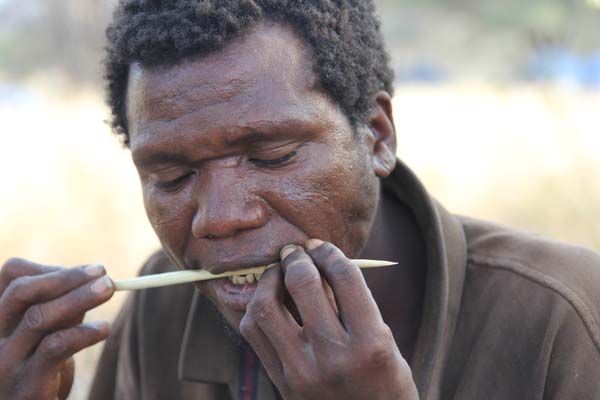
Beyond Planting Trees
The Nature Conservancy recognized the threat to the Hadza, and has been working closely with local partners the Ujaama Community Resources Team (UCRT) and the Dorobo Fund to secure Hadza homelands for traditional use.
“This project is a great example of how multiple partners work together to achieve an outcome,” says Brown. “Each partner has a strength to bring and this is how we will continue to create lasting solutions for people and nature.”
The most important step was establishing Communal Customary Right of Occupancy (CCRO) for the Hadza — essentially legal title to the land where they live. Establishment of these land rights was precedent setting in Tanzania, and was critical for all subsequent conservation actions because it gives the Hadza tenure on their lands. The Hadza achieved legal title to nearly 50,000 acres.
The Conservancy and UCRT also created CCRO’s for the Datoga pastoralists, protecting more than 75,000 acres. This was in recognition of the fact that when pastoralists are displaced, they are forced onto Hadza lands.
As with any land designation, what is on paper does not always translate to what is on the ground. Just because land is legally declared Hadza homeland does not mean others won’t approach.
This point was made dramatically one afternoon in the Yaeda Valley, when I sat with Conservancy staff and Hadza members discussing the issues of encroachment. As we talked, two Datoga pastoralists — illegally on Hadza land — walked right through our group meeting to while searching for lost cows.
The Hadza need scouts to enforce boundaries and wildlife laws. They need legal protection to ensure they retain their rights to the land. And, given the realities of property use today, they need to show that this land has economic value.
Research showed a way to provide funding and protect the habitat: the forest carbon offsets market.
The Hadza need the forest to survive: it supplies their food and shelter and just about everything else. Encroachment is reducing the forest cover by 0.9 percent each year. That may not sound like a lot, but in the long term it’s unsustainable. In the short term, it’s reducing the habitat for wildlife that Hadza need to survive.
Forest preservation has a clear value through the Reducing Emissions from Deforestation and Forest Degradation (REDD) incentives.
Enter Carbon Tanzania, a company devoted to producing carbon offsets through natural forest conservation.
Often, the carbon offsets market has meant planting trees — an idea that rankles Carbon Tanzania co-founder Marc Baker
“I was getting very frustrated with the idea that all we needed to do was plant trees,” he says. “You can’t rebuild an ecosystem just by planting trees. The forest in Tanzania has many values, but we don’t have the luxury of keeping nature for nature’s sake. Nature has to pay for itself. The carbon offsets market is one way to accomplish that.”
The Yaeda Valley made perfect sense – ecologically and culturally – for a pilot carbon market project.
“Here you have land that has value to the Hadza, and it has value in terms of carbon market dollars,” says Baker. “The alternative is poor quality agricultural land that takes away the rights of the Hadza. Can you imagine how painful it must be for Hadza to see people come here and clear land and then work so hard for little gain, when they go to the forest and hunt and eat and have leisurely afternoons? Carbon markets preserve that lifestyle by providing an economic argument for the land.”
First, though, Carbon Tanzania and conservationists had to determine exactly what potential there was for forest carbon markets.
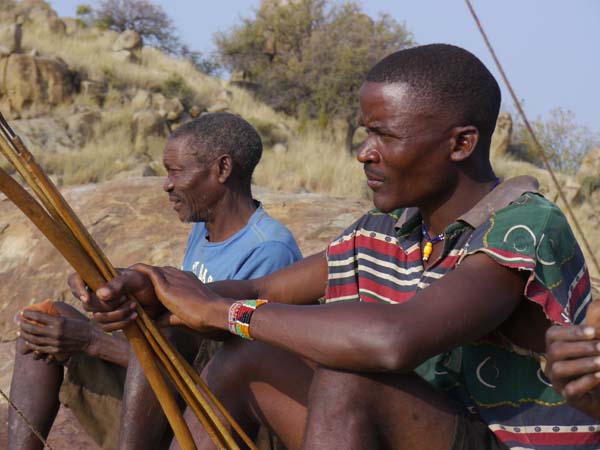
“You Can’t Build Relationships from the Air”
The Nature Conservancy immediately brought its scientific expertise, and utilized remote sensing to get an initial handle on the rate of deforestation. Then it was time for boots, and bare feet, on the ground.
“I’m a real advocate for doing scientific research on location with the people who live there,” says Baker. “You can estimate carbon content from the air but you can’t build relationships from the air.”
Researchers conducted above-ground biomass surveys to determine the amount of carbon storage.
“We had to develop our own statistical program,” says Baker. “We had to establish how much carbon was being stored by the different tree species.”
To conduct the surveys, Baker and partners turned to the people who knew the land best: the Hadza. They joined researchers who took vegetation surveys along predetermined routes. The Hadza helped measure trees and identify plants.
“The on-the-ground work helps the community members understand the work and what we’re trying to accomplish,” says Baker.
The project calculates that more than 18,000 tons of carbon dioxide emissions would be avoided annually over the project’s 20-year crediting period through improved protection and avoided deforestation. Sales of offsets are expected to generate up to $54,000 a year for the Hadzabe.
“It is hard to have to say, but we have to show a way of life, a culture, is valid. And in these times, that means a culture has to show something economically,” says Baker. “This is a project that shows an economic value, while also meeting the cultural and spiritual needs of the Hadza.”
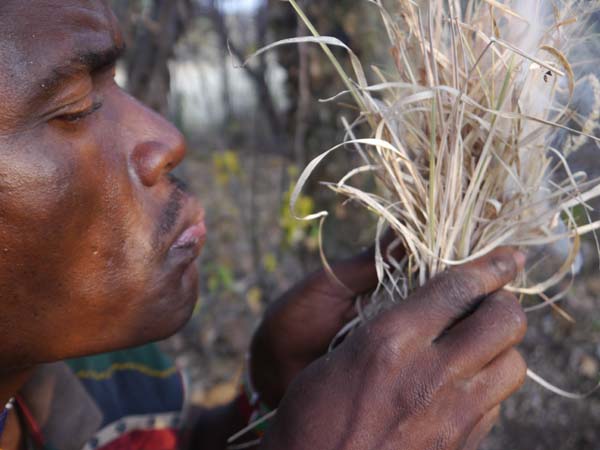
Boutique Carbon
Purchasers of carbon credits do so to offset carbon dioxide emissions; often, this means corporations buying large amounts of credits to help cover one of the environmental costs of industry. In the Yaeda Valley, the offsets could be funded by smaller investments by individuals, a market that Baker calls “boutique carbon.”
Tourism is a huge industry in Tanzania, accounting for more than 17.5 percent of the gross domestic product and 29 percent of export earnings. Most of those tourists come to see wildlife in places like the Serengeti and Ngorongoro Crater, or to enjoy outdoor adventures like climbing Mount Kilimanjaro.
Such visitors love nature, and are contributing to climate change through their flights and other travel. What if they could offset their emissions while benefiting the people and wildlife of the Yaeda Valley?
That’s possible with the carbon project, as Carbon Tanzania is working with safari companies to add fees to trips that go towards preventing deforestation. A tourist could pay $20 to offset her vacation. If a large number of tour companies signed on, it would provide significant funding for Tanzanian forest conservation — and a hopeful future for the Hadza.
One afternoon, as we talked to community members, an infant began crying. His mother picked him up walked over to a branch laden with small, hard berries, plucked it and sat it in front of the happy child. The child immediately quieted and began picking berries off the branch.
That’s how the Hadza approach life — they know that the plants and animals around them will be there and give them what they need. The forest now can provide in another way — helping protect their land and culture in a rapidly changing world.
“If we do nothing, in 20 years this area will be eaten away with nothing left for the Hadza,” says Baker. “Now think about this project. It is buffering the impacts of climate change and keeping carbon in the ground. It is supporting the livelihoods and cultures of hunter-gatherers. It protects wildlife habitat. It allows tourists to offset their carbon dioxide emissions. The project fits this place very well, and offers great hope for people who have lived here for millennia.”
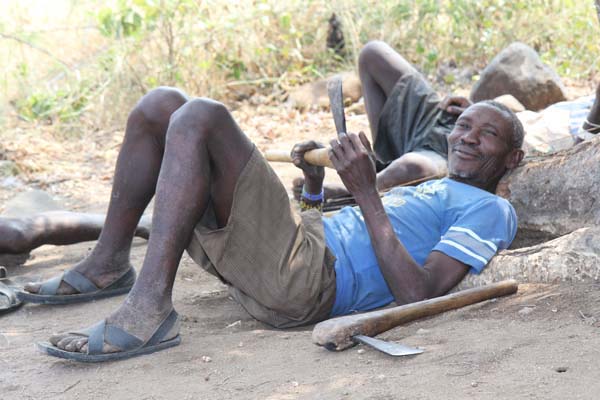
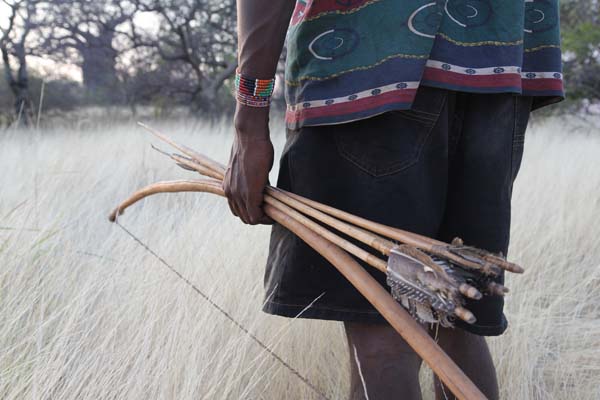



Great post, re-posting on our site!